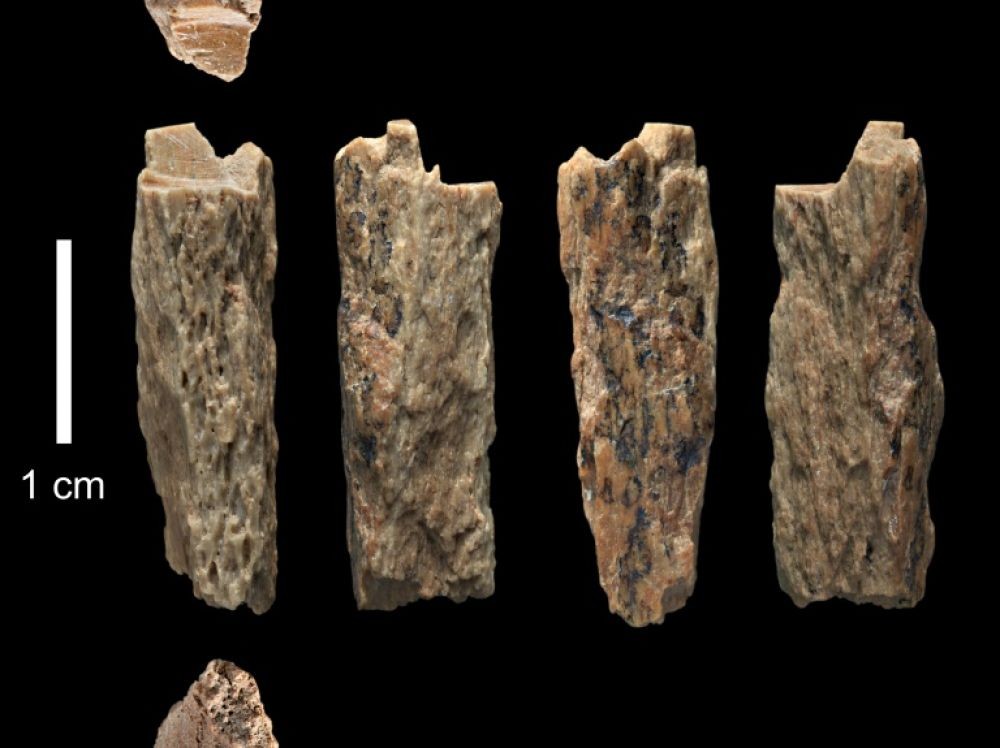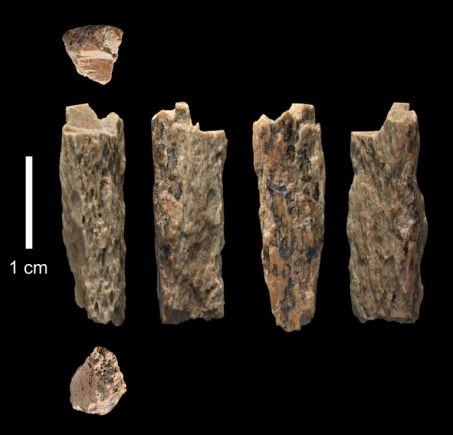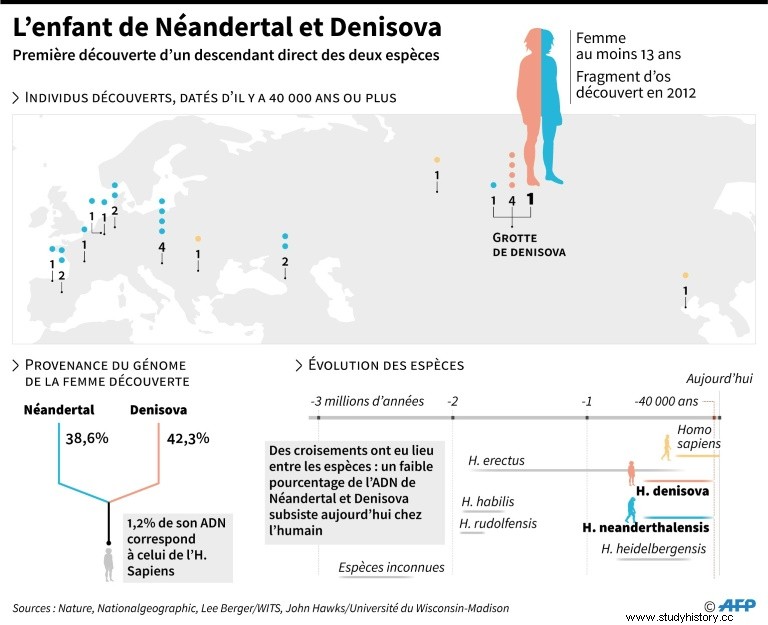This bone fragment is exceptional because it is the first time that the remains of a direct descendant of such a cross between two species of hominids have been discovered.

This photo taken on June 14, 2015 and obtained from Oxford University/Max Planck Institute on August 22, 2018 shows a bone fragment of "Denisova 11" discovered in 2012 by Russians in the Altai mountains in Siberia
Once upon a time, 50,000 years ago, a Neanderthal and a Denisovan. From their union was born a child... A tiny fragment of bone today provides proof of a coupling between these two species of the human line. "This is the first time that we find a direct descendant of these two groups “, explains to AFP Viviane Slon, of the Max-Planck Institute for Evolutionary Anthropology in Leipzig in Germany, co-author of the study published Wednesday August 22, 2018 in the magazine Nature. Denisovans and Neanderthals separated there 400,000/500,000 years ago, becoming two distinct species of the genus Homo (Homo sapiens forming another).
Neanderthals disappeared from the face of the Earth around 40,000 years ago, for an as yet unknown reason. The Denisovans also became extinct but it is not known exactly when. On the other hand, DNA analyzes have proven that Denisova's Man left part of his genome to certain Homo sapiens:less than 1% in Asian and Amerindian populations, and up to 5% for Australian Aborigines or the Papuans of New Guinea. Similarly, all modern humans except Africans have approximately 2% Neanderthal DNA in their genomes, evidence of interbreeding that may have occurred between these species in the distant past.
This family history is revealed by a 1.5 cm bone, so small that the researchers could not tell at first glance whether it had belonged to a hominid or an animal.

This photo taken on June 14, 2015 and obtained from the University of Oxford/Max Planck Institute on August 22, 2018 shows a bone fragment of "Denisova 11" discovered in 2012 by Russians in the mountains of Altai in Siberia. ©Thomas Higham / University of Oxford / AFP
Discovered in 2012 in a cave in the Altai Mountains in Siberia, near the current Russian-Mongolian border, "Denny" as the researchers called it, belonged to a female being at least 13 years old. years old, living about 50,000 years ago. The bone would come from his femur, his tibia or his humerus. The cave where she died, called Denisova's cave, was already famous for having yielded the first fossil remains of Denisova's Man, fragments of a finger joint.
By analyzing "Denny", geneticists have managed to distinguish the chromosomes that the young woman inherited from her father and her mother. No doubt for them, they were bequeathed to him by a Neanderthal and a Denisovan.

©The child of Neanderthal and Denisova (AFP - Simon MALFATTO)
"At first I thought there had been a mistake in the lab ", says Svante Pääbo, also a researcher at the Max Planck Institute and co-author of the study. Leaving Africa, the Neanderthals dispersed to Europe and western Asia while the Denisovans headed to East Asia. "Neanderthals and Denisovans may not have had many opportunities to meet. But when it happened, they didn't seem to have any prejudice towards each other ", notes Svante Pääbo who is behind the identification of Denisova's Man. "They had to mate frequently, much more than we previously thought, otherwise we would not have been so lucky ", he adds.
